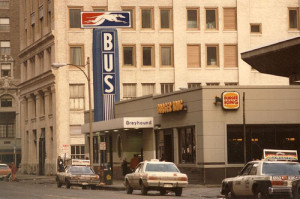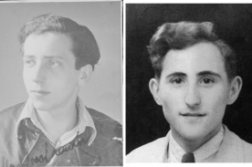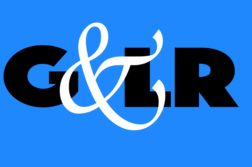
The following talk was delivered at the National Lesbian and Gay Journalists Association conference, which is in Boston this year, August 22 to 25. As editor and founder of The Gay & Lesbian Review, I tried to place the magazine in the context of Boston’s history as a hotbed of GLBT publishing starting in the early 1970s.
I WANT FIRST to acknowledge this hotel [the Park Plaza in Boston]as the site where the annual OutWrite Conference was held throughout the 1990s – which was in many ways the incubator for this magazine. (More on that later.) But note too that just outside is Park Square, which was the center of gay life from the 1950s through the ’70s – featuring three gay bars, the Trailways Bus Station, the Greyhound Station, and “the block,” where hustlers and their johns would connect.
Let me confide that I walked here from the world headquarters of The Gay & Lesbian Review, which is published in a residential office in Boston’s South End, still the closest thing Boston has to a gay ghetto. Nevertheless, the Review’s focus and readership have always been national rather than specific to Boston. I’ve sometimes said that the magazine could be published anywhere, and also that Stephen [my partner]and I should probably live in New York, which is after all the belly of the publishing beast.
But the GLR’s origins are decidedly local. I’m forced to admit that the Review started out as a quasi-Harvard publication, by which I mean that it grew out of an alumni organization called the Harvard Gay & Lesbian Caucus, whose newsletter I edited in the late ’80s and early ’90s. The magazine published as The Harvard Gay & Lesbian Review from its first issue in Winter 1994 until the last issue of 1999, at which time the University’s name was dropped and the “worldwide” added—which would seem like quite a leap in scale, though I suppose that’s a matter of perspective.
I think there was also a certain historical continuity in the fact both Fag Rag and Gay Community News stopped publishing altogether in the ’90s (after prolonged death throes). Other, non-Boston periodicals were dead or dying at this time, even as a new genre of slick monthlies was coming into being. (One of them was even called Genre.) So, if anything, the dying breed served as a kind of negative example. Both Fag Rag and GCN were founded in the early 70s—and kudos to both for lasting for 20+ years—and they were a product of their times. Both mags evolved, to be sure, but one could never miss Fag Rag’s origins in gonzo hippie journalism, complete with full frontal nudity, or GCN’s commitment to the unadorned style of a New Left broadsheet. In contrast, the HGLR set out to be serious, even respectable, in a way that Fag Rag was not, and politically neutral, albeit relentlessly pro-gay rights, in contrast to GCN. The model was The New York Review of Books, which I must say looks much the same today as it did in 1994.
By the way, let me mention that John Mitzel recorded a series of interviews in which he discussed the origins of the two magazines in Boston. For a while both were housed in the same office space on Bromfield Street in Boston’s financial district. Mitzel tells the story of how one night the Fag Rag crowd returned to the office after an evening of carousing, only to walk in on an earnest meeting of the GCN editors, who visibly disapproved of the invaders. Charley Shively, leader of the pack, asked whether this was a meeting of the Ladies’ Christian Temperance Union.
At any rate, it was in the early ’90s that everything changed. Both GCN and Fag Rag had slowly faded away, while the venerable Christopher Street was graying—literally, the paper seemed to be dropping on the paper whiteness scale with every issue—and seemed increasingly filled with long poems and empty space. Meanwhile, a couple of contenders for serious magazines—OutWeek and Out/Look—came and went rather quickly. But the breakthrough magazine was just plain Out, which was produced in the slick style of, say, Esquire or Cosmo and included mainstream ads for cars and booze in all their voluptuous glory. Out begat a number of other publications, some of which survive to this day, notably Curve and Instinct. Even The Advocate had to reinvent itself after years of plainness, becoming a glitzy monthly magazine that looked more like Time or Newsweek. (Today, both The Advocate and Out are published by the same faceless corporation in LA.)
It was at this time and against this backdrop that the HGLR came into being. It filled a void created by the die-off of the 70s magazines but also created a new niche of educated, demanding readers. Other periodicals arose to fill other niches that were opening up. The Lambda Book Report, published by the Lambda Rising bookstores, emerged as a response to the gay publishing boom and promised to review “all” GLBT books, a commitment that surely proved impossible by and by. A scholarly journal called GLQ was founded in the same year as the Review and remains the voice of “queer theory”; and all the while The Journal of Homosexuality, founded in the 70s, has continued to publish. Both scholarly journals have tiny print runs and distribute mostly to libraries and wealthy scholars.
But the real importance of Boston, so far as the GLR is concerned, is that it was the home of the OutWrite conference for many years throughout the 1990s. It was here that I first started talking about a quarterly journal that would feature longer essays and in-depth book reviews in a restrained, even elegant, format—and meeting the people who would eventually become contributors to the magazine. OutWrite was largely a production of the Bromfield Street Educational Foundation, which still published GCN, having long since left Bromfield St. after their offices were torched in 1982. And while the GCN itself was moribund at this time, the sponsorship of OutWrite was a huge deal (special thanks to Michael Bronski), because the conference itself was immense. It was attended each year by well over 2,000 writers, editors, agents, publishers, and so on. It was held here because the Park Plaza was the only hotel in Boston that was unionized. And in keeping with the GCN’s egalitarian philosophy, registration fees were kept very low.
Eventually, there was resentment toward Boston for “always” getting OutWrite, so for a few years in the late 1990s they tried moving it around; but it died after a few tries. Perhaps Boston really was the sine qua non for this conference of GLBT writers, and perhaps also for this magazine, who’s to say? In any case, The GLR is about to celebrate its 20th birthday with the Jan.-Feb. 2014 issue. It will be an anniversary issue that’s about anniversaries, of which there are many next year, including the 10th anniversary of same-sex marriage in Massachusetts. Once again, we seem to have started a trend.






